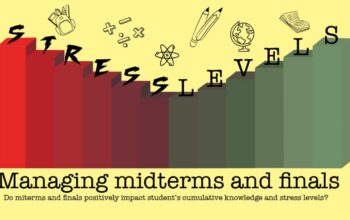“I’m there two hours a night, six days a week including three hours on Wednesdays,” Erika continued. “The rehearsal schedule is always changing and can be from ten thirty in the morning till six at night.”
Junior Anna Nguyen also finds the intense time commitment difficult to manage, “I have to work, babysit, do homework. It can be tough to take out two hours of the day for dance,” she said.
The physical demand is equally challenging. “They are basically asking you to deform your feet, since point shoes hurt your feet so much. There have been times where I’ve come off stage crying,” Erika said. “But it’s worth it. I can’t tell you exactly why, but it is.”
“Dancing injured is one of the most demanding parts of ballet,” Birna added. “I kept dancing on an injured toe as to not fall behind, but now I need surgery.”
Different dancers continue ballet for different reasons. For Thee, the studio has become a second home. “Ballet has always been my rock. No matter what else changes in my life, it has always been there. It feels like I spend more time there than I do in my own house,” she said. “When I was on a college tour over the summer, a director of one of the dance departments told me that sometimes she would find one of her dancers in an empty studio, just doing school work or relaxing, because that was the place that was most familiar to them. It felt like home.”
Like Thee, Birna’s love of ballet also stems from its ability to distance oneself from everyday life. “You become a different person. You forget about everything else and you can focus on yourself.”
For Erika, it is a desire to perform. “I love performing since you can show what you know and what you can do with your body, in an art form that has been respected for centuries.”
Associate Director Ted Thomas, one of the head directors at NEAD, commented on the benefits of ballet. “You want people to actually have something in their life that they love and care about so that they can exercise and keep themselves physically and mentally ready for the world,” he said. “You get times when you have to accept disappointment and you get times when you have to accept great achievement. So it gives you a real round of perspective in life, relationships, team work and working in any kind of environment.”
The dynamic among dancers at the studio is an interesting balance between competitiveness and camaraderie. “You have to work for everything. [Casting] is very competitive but you form a special bond with the other dancers. It sometimes conflicts since you want the best for your friends but you want to succeed yourself,” Birna said.
“The great thing about ballet is that it teaches team work and camaraderie,” Mr. Thomas added. “And a lot of times that camaraderie lasts through high school, through middle school, through elementary school, and you end up with a friend that you’ve been close friends with for the first sixteen years of your life.”
Dynamics with the studio’s main directors, Gina Ortiz, Francis Ortiz, and Ted Thomas, are also a balance. “The directors are like family, but at the same time you have to realize that are your directors and you need to respect them. Even so, you still feel really close to them. The partner I trust the most is Ted,” Erika said.
“Gina is very big on details, whereas Francis is all about going back to basics and strength,” Birna said. “Ted is all about movement. He wants us to experiment withother dance styles to become more versatile.”




